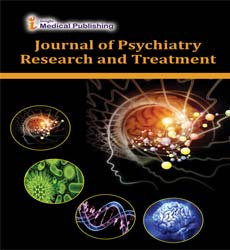Othello Syndrome Secondary to Subthalamic Deep Brain Stimulation in Parkinson's Disease
Abstract
Deep brain stimulation (DBS) is established method of Parkinson’s disease(PD) treatment. The stimulation of the limbic portion of subthalamic nucleus (STN) might devise psychotic symptoms. PD psychosis may be related also to drug intake, especially dopamine agonists (DA). Authors present 36-year old PD patient treated with STN DBS with delusions of the marital infidelity that appeared 3 months after initiation of the stimulation and confining of l-dopa and DA to zero. Those symptoms were identified as Othello-like syndrome (OLS) and were successfully treated with both quetiapine and reprogramming of the stimulation. At one-year follow-up no recurrence of the psychotic symptoms were noted. The patient required no pharmacotherapy.
Deep brain stimulation (DBS) is widely used method of Parkinson’s disease(PD) treatment. Psychotic symptoms frequently go parallel to motor symptoms of PD and drug intake. Dopamine agonists (DA) were identified as the most relevant risk factor for PD psychosis [1]. It has been previously reported that stimulation of the limbic portion of subthalamic nucleus (STN) might devise psychotic behavior like: sadness, tearfullness, anxiety, hipomania or mania [2,3].
Thirty-six-year-old PD male patient, pharmacologically treated with l-dopa for 8 years. First symptoms of PD: tremor and bradykinesia he observed when he was about 18 years old. He was diagnosed with PD at the age of 28. Patient presented all motor symptoms of PD: tremor, rigidity and bradykinesia. Two point mutations of the gene PARK2: p.K211N/p.R275W were confirmed. Unified Parkinson’s Disease Rating Scale (UPDRS), Brief Psychiatric Rating Scale(BPRS) and Positive and Negative Syndrome Scale(PNSS) were used pre-and postoperatively to evaluate patient’s motor symptoms and psychiatric state.
Patient was qualified to STN DBS according to CAPSIT-PD criteria, that included neuropsychological evaluation [4]. Patient also suffered from dyskinesias. The patient underwent bilateral STN DBS.
Results
The stimulation was initiated 4 weeks after surgery at C+, 0-, 1- 1,5 V, 130 Hz, 60 µs bilaterally. The amplitude of the stimulation was increased up to 2,2 V after two months and motor symptoms improved significantly (UPDRS part III medication OFF from 46 before surgery dropped to 4 with stimulation ON and medication OFF) that allowed patient to confine his l-dopa to zero. On the third month patient reported with delusions of the marital infidelity and dysphoria that he was aware of. He was aggressive, he destroyed the telephone of his wife. He was convinced that his wife has an affair with another PD patient, who he met few years before. The symptoms accreted over one week after change of the settings to: BPRS from 18 before surgery to 47 and PANSS from 32 before surgery to 87. Psychiatrists diagnosed Othello-like syndrome (OLS). Quetiapine was incorporated to the treatment (25 to 100 mg daily). 24 hours after turning off of the DBS the motor symptoms of PD reappeared (UPDRS part III OFF 38) and psychotic symptoms remained, but the patient was less dysphoric and non-agressive. DBS was reprogrammed to C+, 2-, 3- 1,5 V, 130 Hz, 60 µs bilaterally. After three months, psychotic symptoms vanished. Ten months after implantation of DBS quatiapine was discontinued. One year after surgery the setting were set: C+, 2-, 3- 2,0 V, 130 Hz, 60 µs bilaterally with UPDRS part III off medication- 7 and no psychotic symptoms (BPRS 16, PANSS 36)
Open Access Journals
- Aquaculture & Veterinary Science
- Chemistry & Chemical Sciences
- Clinical Sciences
- Engineering
- General Science
- Genetics & Molecular Biology
- Health Care & Nursing
- Immunology & Microbiology
- Materials Science
- Mathematics & Physics
- Medical Sciences
- Neurology & Psychiatry
- Oncology & Cancer Science
- Pharmaceutical Sciences
